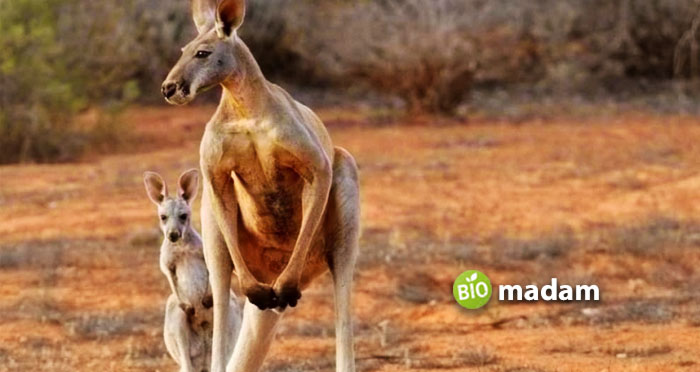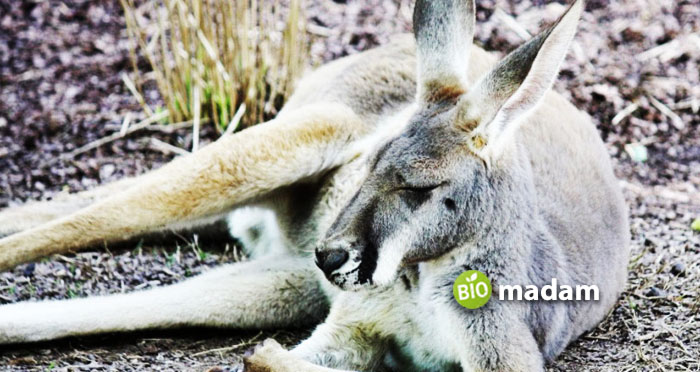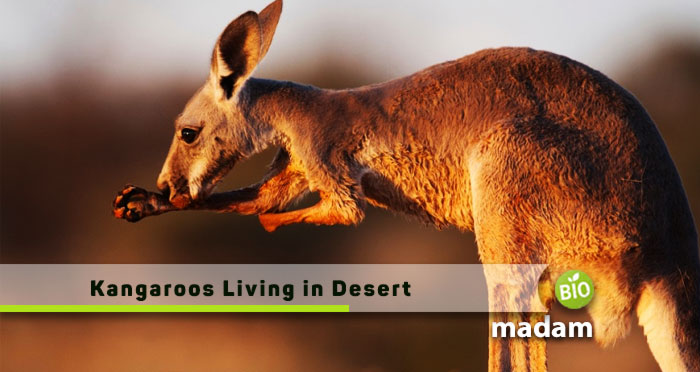Australia’s vast interior landscapes contain expansive deserts and arid grasslands, ecosystems that may seem inhospitable to many mammals. Yet a number of unique species have adapted to survive in these dry conditions, including the iconic kangaroo.
Of the four kangaroo species native to Australia, the red kangaroo has become most associated with life in the desert. Red kangaroos are found across the arid and semi-arid zones of the Australian mainland, from dusty red sand dunes to dry scrubland. But how have kangaroos evolved to hop and thrive in such hot, water-scarce environments?
Their specialized adaptations provide insights into the remarkable resilience of kangaroos in Australia’s desert habitats. This article will explore how kangaroos are able to live in the top deserts of Australia and arid areas despite the challenges these landscapes present.
Do Kangaroos Live in Australia?
Kangaroos only live in Australia. They are special animals that have evolved and changed over time to fit into Australia’s different environments. From open plains to forests and deserts, kangaroos have found their own ways to live in these places. Things like plants, animals, and weather in Australia have shaped how kangaroos are, making them unique to this continent.
Why Do Kangaroos Only Live in Australia?
Kangaroos have made Australia their exclusive home due to their remarkable adaptations to the habitats found on the continent. Understanding their habitat sheds light on why they are uniquely suited to Australia.
- Diverse Landscapes: Australia boasts a wide range of landscapes, from vast open plains and woodlands to arid deserts and tropical forests. Kangaroo species have evolved to thrive in these diverse environments, showcasing their adaptability to different climates and ecosystems.
- Specialized Adaptations: Kangaroos have developed specialized adaptations to suit the specific conditions of their habitats. For example, the red kangaroo’s ability to navigate arid zones and deserts highlights their unique physiological and behavioral adaptations, such as efficient water conservation strategies and nocturnal feeding behaviors.
- Ecosystem Interdependence: Kangaroos play a crucial role in Australia’s ecosystems. They interact with the native flora and fauna, contributing to the balance of these ecosystems. The interconnected relationships between kangaroos and their environment have evolved over time, making them an integral part of Australia’s ecological tapestry.
- Evolutionary History: The evolutionary history of kangaroos is closely tied to the geographical and ecological features of Australia. Over time, they have adapted to the specific challenges and opportunities presented by the continent’s unique landscapes, resulting in their exclusive distribution in Australia.

Kangaroo Species and Habitats
Australia is home to different kangaroo species, each adapted to specific environments. So, where do kangaroos live in Australia? Discover their distinct living spaces across varied landscapes in Australia.
Red Kangaroo (Macropus rufus)
The red kangaroo (Macropus rufus), known for its vibrant orange-red hue in males and blue-grey coloration in females, is the world’s largest marsupial. Thriving in diverse landscapes, these iconic kangaroos prefer sparsely wooded or open plains, including habitats like grasslands and savanna woodlands. Their remarkable adaptability extends to arid zones, and they are notably prevalent in the semi-arid and arid regions of mainland Australia. The red kangaroo’s ability to navigate such varied environments underscores its resilience and significance in Australia’s unique ecosystems.
Eastern Grey Kangaroo (Macropus giganteus)
The Eastern Grey Kangaroo is recognized for its distinctive grey fur and robust hind legs. Preferring a mix of grassy areas and woodlands, these kangaroos are versatile inhabitants, thriving in open forests, woodlands, and coastal regions. With a distribution spanning eastern and southeastern Australia, they showcase adaptability within the diverse ecosystems of the continent. The Eastern Grey Kangaroo’s presence highlights its significance in Australia’s varied landscapes, contributing to the intricate balance of native habitats.
Western Grey Kangaroo (Macropus fuliginosus)
The Western Grey Kangaroo (Macropus fuliginosus) shares a resemblance with the Eastern Grey Kangaroo but is distinguished by its darker coat. Exhibiting adaptability to various environments, including woodlands, shrublands, and grasslands, they thrive in coastal areas and open forests. Predominantly found in southwestern and western Australia, the Western Grey Kangaroo showcases versatility and resilience across diverse landscapes, highlighting the adaptability of kangaroo species in different regions.
Antilopine Kangaroo (Macropus antilopinus)
The Antilopine Kangaroo (Macropus antilopinus), distinguished by its reddish-brown fur, holds the distinction of being the largest among kangaroo species. Found in tropical and monsoonal forests, along with open woodlands in northern Australia, their expansive range includes areas within northern Australia, specifically in the Northern Territory and Queensland. The Antilopine Kangaroo’s impressive size and ability to thrive in various ecosystems highlight the adaptability of kangaroo species across different regions of the continent.
How Many Kangaroos Live in Australia?
As of 2021, Australia is home to an estimated 50 million kangaroos, surpassing the country’s human population twofold. Despite their protected status, kangaroo numbers have nearly doubled in the last decade, posing challenges for farmers who perceive them as pests.
The surge in kangaroo population raises ecological and agricultural concerns, necessitating effective management strategies. Annually, approximately 3 percent of Australia’s kangaroos, equivalent to around 1.5 million, are culled for meat production to address these challenges. This controlled culling aims to maintain ecological balance, alleviate agricultural conflicts, and sustainably manage the kangaroo population.
Challenges Faced by Kangaroos
Kangaroos face significant challenges impacting their existence. Despite their seemingly carefree demeanor, they encounter substantial threats.
Human Predation
Human predation significantly threatens kangaroo populations, with over a million kangaroos hunted annually for meat and skins. This widespread hunting intensifies the strain on their numbers.
Impact of Human Activities
Human actions, including hunting practices and alterations to ecosystems, compound the challenges faced by kangaroos. The increasing encroachment of human presence alters their natural habitats and poses additional threats to their survival.
Environmental Challenges – Drought
Environmental factors, such as drought, exacerbate their plight by diminishing food supplies, affecting the intricate life cycle of these iconic marsupials. The delicate balance between adaptation and challenges from human activities and environmental changes underscores the complex dynamics that kangaroos navigate in their ecosystems.

Final Words
Kangaroos are a symbol of Australia, their bouncing forms and dogged perseverance representing the spirit of the Land Down Under. But the future of these iconic marsupials remains uncertain, as they walk the tightrope between environmental pressures and human impacts. Maintaining resilient kangaroo populations will require holistic management strategies that consider their welfare along with ecological and agricultural needs.
With conscientious stewardship, these marsupials can continue hopping across the diverse landscapes they call home, showcasing the wonder of Australia’s native wildlife for generations to come. Though challenges remain, kangaroos remind us that with adaptability and endurance, it is possible to thrive even in the harshest of environments.

As a freelance journalist, copywriter, and editor, Rachel Truman crafts compelling stories across travel, food, family, lifestyle, and B2B. With a keen eye for detail, Rachel specializes in creating engaging branded content, making every word an adventure

